If you’re trying to choose between Amazon FBA vs FBM, the answer isn’t always obvious. Both fulfillment models have their strengths, and the best choice depends on your product, capital, and how much control you want over operations. I’ve used both over the years, and the difference in costs, speed, and sales performance can be significant.
In this guide, I’ll walk you through the pros and cons of FBA vs FBM, including current fees, shipping speed, Buy Box performance, and when it makes sense to use both. Whether you’re a new seller or already managing multiple SKUs, you’ll get a clear breakdown that helps you make the right call in 2025.
FBA vs FBM At a Glance
If you’re short on time or just want the big picture, this table lays out the key differences between FBA and FBM. Use it to get a quick idea of your options before we get into the details.
| Factor | FBA (Fulfillment by Amazon) | FBM (Fulfilled by Merchant) |
|---|---|---|
| Prime / Shipping Speed | Prime badge with 1–2‑day delivery times | No Prime badge with 3–5 business day delivery times |
| Fees | FBA fees (storage, fulfillment, additional Q4 surcharges). | Fewer Amazon fees, but you cover shipping and handling. |
| Buy-Box Advantage | Buy Box advantage: FBA offers hold the Buy Box the majority of the time | Must price lower than FBA to compete for the Buy Box |
| Workload | Hands‑off: Amazon stores, picks, packs, ships, handles returns & support | Manual: seller stores inventory, packs, ships, manages support & returns |
| Time to Market | Slower. Inventory must be prepped, shipped, and checked in. | Fast. List and sell same day if inventory is ready. |
What is Amazon FBA?
Fulfillment by Amazon, or FBA, is a fulfillment method where Amazon stores, packs, and ships your products for you. Instead of handling every order yourself, you send your inventory to Amazon’s warehouses, and they take care of the rest. This includes everything from delivery to customer service and returns.
Here’s how it works: once you prep and ship your products to an Amazon fulfillment center, Amazon logs them into your account and stores them in their network. When a customer places an order, Amazon picks the item, boxes it up, ships it to the buyer, and handles any questions, returns, or refund requests that follow.
The service comes with several fees, but for many sellers, the time and effort it saves more than makes up for the cost. That’s why 50% of Amazon sellers in 2025 use FBA to fulfill their orders. This makes it the most common option for all third-party sellers on Amazon
What is Amazon FBM?
Fulfillment by Merchant (FBM) means you handle everything after the sale, including storage, packing, shipping, customer service, and returns. You still sell on Amazon, but instead of sending inventory to their warehouses, you keep it on hand and ship orders yourself.
Here’s how it works: when someone buys your product, you’re responsible for pulling the item from your inventory, boxing it up, and getting it out the door on time. That also means choosing a shipping carrier, printing labels, and making sure the package gets delivered within the promised timeframe. You also handle returns and refund requests directly, which gives you more control but adds to your workload.
The main reason sellers choose FBM is the flexibility it offers. You decide how your products are stored and packaged, which carriers to use, and how to manage inventory. You also get to avoid all of the storage and inventory fees that come with using FBA. Although not as popular as FBA, in 2025, around 29% of Amazon sellers use FBM exclusively, and many more use it alongside FBA as an alternative way to fulfill orders.
Pros & Cons of Each Model
FBA and FBM each have their own strengths, but they’re built for different types of sellers. I’ve used both in my business over the years. The key is understanding what fits your operation, especially when you factor in the types of products you’re selling and the amount of time you have to dedicate to your Amazon business.
Pros of FBA
- Prime Shipping: Your listings will automatically ship with Amazon Prime and get the Prime badge by default, which can boost traffic and conversion rates significantly.
- Less Manual Labor: Amazon handles packing, shipping, and product returns. That frees up your time to focus on other parts of your business.
- Built-In Customer Service and Returns: When a customer has an issue, Amazon handles it. If an item is delayed or damaged during shipping, they usually issue a refund or replacement, and your account doesn’t take the hit. They’ll even remove negative feedback if it relates to shipping or delivery.
- Buy Box Advantage: FBA listings are more likely to win the Buy Box, even when priced slightly higher than FBM offers. If you’re doing retail or online arbitrage and competing with other sellers on the same ASIN, this can be the difference between steady sales and no sales at all.
- Location Independence: Since you’re not managing inventory or shipping, you’re not tied to a physical location. If you’ve ever dreamed of becoming a “digital nomad” or just avoiding a garage full of boxes, FBA makes that possible.
Cons of FBA
- Higher Fees: You’ll pay per-unit fees for storage, picking, packing, and shipping, and they’re not cheap. During Q4, storage rates spike dramatically, and if your inventory doesn’t sell quickly, long-term storage penalties kick in.
- No Control Over Branding or Packaging: Amazon uses its own packaging and customer service teams. You can’t include custom packaging or inserts.
- Restock and Storage Limits: Amazon restricts how much inventory you can send based on your past performance and sell-through rate. This can limit your ability to scale or grow your business.
- Inventory Can Take Time to Go Live: It can take days, or even weeks, for your products to go live after arriving at Amazon’s warehouse. This long turnaround time can be a big deal, especially in Q4.
- Returns Are Amazon’s Call, Not Yours: Amazon decides whether or not to accept returns. Even if a buyer clearly damaged the item or returned it outside the return window, Amazon may still refund them, at your expense.

Pros of FBM
- Full Control Over Fulfillment and Inventory: You manage where and how your products are stored, packed, and shipped. This flexibility is helpful for sellers with unique, customizable, or handmade products.
- Custom Packaging and Branding Options: You can use your own boxes, add inserts, or personalize packaging to match your brand and create a more memorable customer experience.
- Much Better Cashflow: FBM lets you list products immediately and sell the same day without waiting for FBA check-in times, which leads to much smoother cash flow.
- Direct Customer Interaction: You handle service and returns directly, which allows for more personalized communication, faster issue resolution, and opportunities to collect feedback or build brand loyalty.
Cons of FBM
- More Work: You’re responsible for managing every order, from picking and packing to shipping and support, which becomes a time burden as your business grows.
- You Handle All Customer Service and Returns: Every refund, return, and complaint goes through you. This can further add to your workload or require extra staffing as your business scales.
- Lower Conversion Rates without the Prime Badge: FBM listings often convert worse than FBA because shoppers trust the Prime badge. Without it, many shoppers may skip over your product, even if your reviews and price are solid.
- Harder to Win the Buy Box: FBM listings are less likely to win the Buy Box or rank high in search, unless you qualify for SFP or significantly undercut FBA competitors on price.
- Hidden Overhead Costs: Even without FBA fees, you’ll still pay for storage space, packaging supplies, software, and possibly warehouse staff if your operation grows.
6 Key Factors to Help You Choose FBA or FBM
There’s no one-size-fits-all answer when it comes to FBA vs FBM. The right choice depends on what you’re selling, how you run your business, and where your priorities lie. If you’re on the fence, these six factors can help you break it down.
1. Product Size & Weight
The size and weight of your product play a bigger role than most new sellers expect. They directly impact your fees, margins, and which fulfillment model actually makes the most sense.
FBA is usually the better choice for small, light, fast-moving items. Amazon’s fee structure favors these products, and their shipping discounts are hard to beat. For anything under a pound and priced under $25, FBA often delivers a better ROI. You get faster Prime shipping and lower shipping costs, sometimes up to 70% less than what you’d pay going direct with USPS or UPS.
But once you start dealing with bulkier or heavier products, the math changes. FBA fees go up fast based on product size. Storage costs alone can get out of hand, especially during Q4 or if your item moves slowly. If you’re working with something oversized, like a kayak or a piece of furniture, I would recommend FBM. It gives you more control over storage and packaging, and it’s often cheaper than FBA when it comes to these larger items.
Here’s one rule of thumb I use: if your FBA fulfillment fees (not counting cost of goods or referral fees) are more than 38% of your sale price, FBM is probably worth considering. For higher-ticket items, say $50 to $100 or more, it’s often possible to ship and handle them yourself for a better margin. At the end of the day, it is always a good idea to run a potential product through a profit calculator like Seller Amp to decide what makes sense for your business.
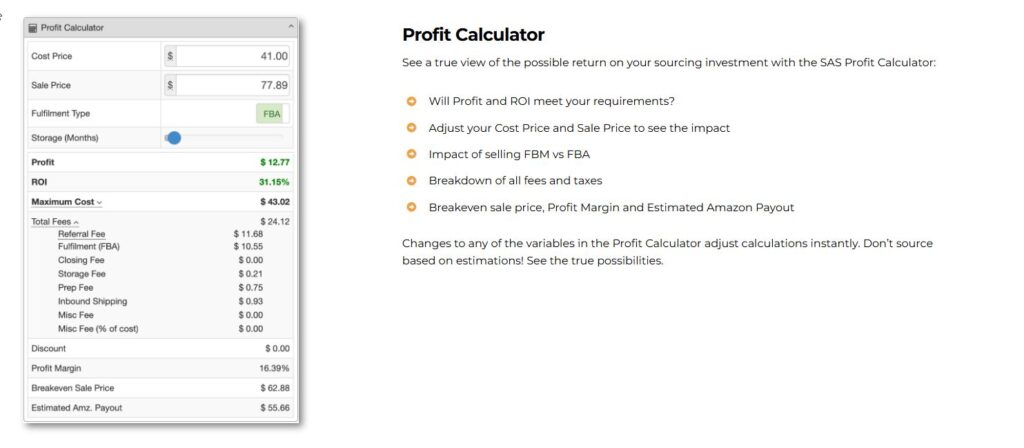
2. Buy-Box Win Rate
If you want steady sales on Amazon, you need to win the Buy Box. Over 80% of purchases happen through that single button, and your fulfillment method plays a major role in whether you win it or not.
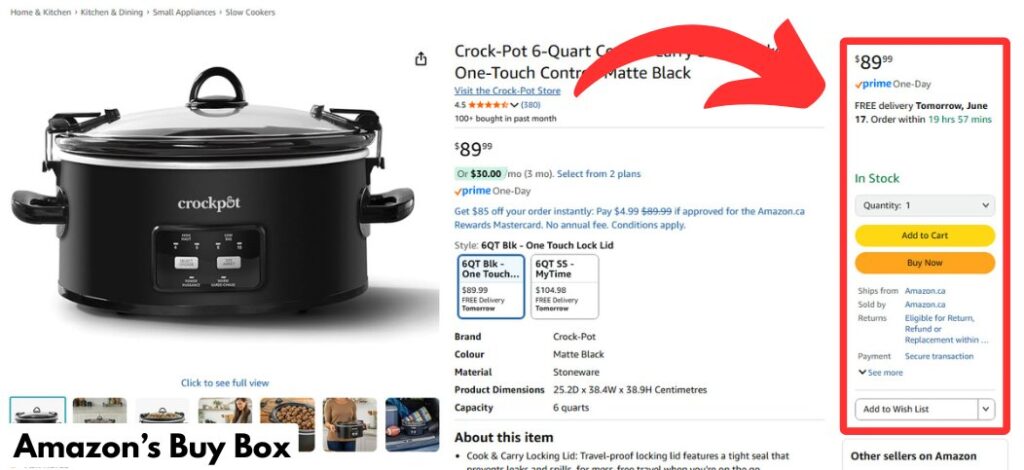
FBA gives you a clear advantage here. Since Amazon manages the entire customer experience, it trusts FBA listings more and rewards them with the Buy Box more often, even when they’re priced higher than FBM offers. I’ve seen FBA sellers hold the Buy Box with prices up to 20% higher than a merchant-fulfilled competitor. That’s how much weight Amazon puts on your fulfillment method.
FBA also benefits from Amazon’s regional inventory distribution. Your products get spread across the country, closer to customers, which increases your chances of winning regionally targeted Buy Boxes. For example, if you’re based in LA, but a shopper in Texas can get your product delivered tomorrow from the local Amazon warehouse, while a competitor’s FBM offer ships from New York, Amazon’s algorithm is going to favor you.
FBM sellers can still win the Buy Box, but it’s a lot more difficult. You’ll usually need to beat FBA prices by a meaningful margin and maintain excellent seller metrics. If you’re considering FBM, I recommend using a tool like Keepa to check the Buy Box history of any potential product ideas. If FBM wins less than 20% of the time, you’re going to have a hard time winning the Buy Box without a much lower price point than your competitors.
The bottom line is, if Buy Box control is a core part of your business model, and for most sellers, it is, FBA is your strongest play.
3. Shipping Speed
With over 82% of US households having a Prime membership, 1-2 day shipping times are no longer a benefit; they are an expectation.
With FBA, speed is built in. Amazon handles fulfillment through its nationwide network, so your orders ship fast, often with same-day or two-day shipping. You also get the Prime badge automatically, which can increase your conversion rate by as much as 50%.
For most FBM sellers, it is simply impossible to match the delivery times available to FBA sellers. In most cases, you’ll need to settle for 3-5 day deliveries, which isn’t bad, but is enough to push some shoppers away from your listings. You also have the responsibility of managing transit times, cut-off hours, and your own carrier drop-offs. If you miss a promised ship date, Amazon will ding your metrics, and enough misses can put your account at risk.
What about Seller-Fulfilled Prime?
Seller-Fulfilled Prime (SFP) is a program that lets FBM sellers offer one- or two-day Prime shipping without using FBA. You handle fulfillment yourself, but your listings get the Prime badge once you qualify.
This gives you the benefits of better conversion rates and more Buy Box share without the need to use FBA.The catch? You have to pass a trial period and maintain very high shipping performance to stay eligible. If you’re an experienced FBM seller with a reliable shipping setup or a solid 3PL, SFP can be a powerful way to make more sales without having to deal with FBA fees.
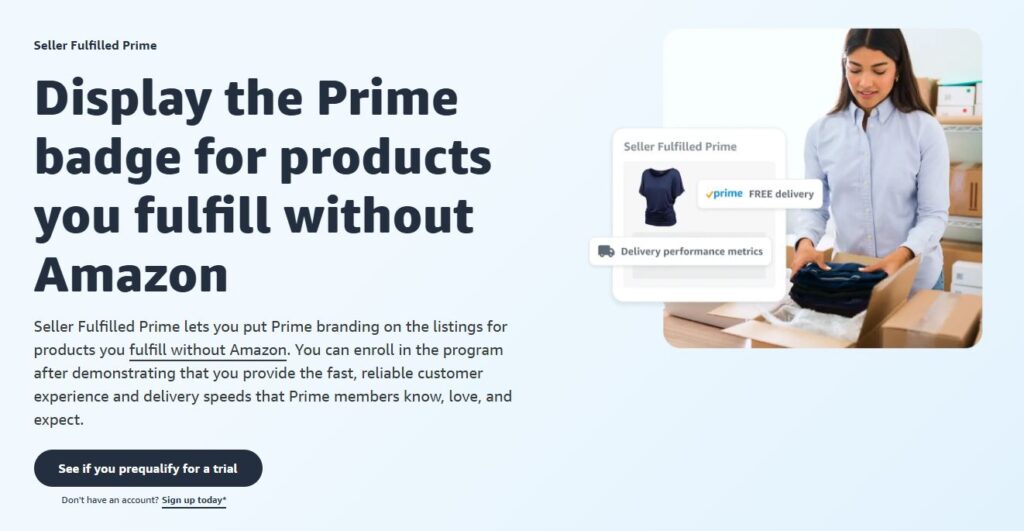
4. Storage Needs and Fees
Storing your inventory in Amazon’s warehouses isn’t free. You’ll need to pay standard storage fees based on the size of your products. These fees are relatively cheap throughout most of the year, but they skyrocket in Q4 (October to December). Additionally, FBA sellers have to manage long-term storage fees, now called the Aged Inventory surcharge. These fees kick in as soon as your inventory reaches 181 days in storage, and they continue to ramp up over time. As of 2025, this fee starts at $0.50 per cubic foot but can scale up as high as $6.90 per cubic foot for items stored more than 365 days.

There’s also the issue of restock limits. Amazon doesn’t let you store unlimited inventory anymore. If you’ve got a fast-selling product and you hit your cap, you’re stuck. You also lose direct access to your inventory, and once it’s in their system, it’s handled their way, including commingling, where your products may get mixed in with similar ones from other sellers.
Compare this to FBM, which gives you complete control of product storage. You choose how much to store, when to ship, and how to prep each order. It’s a great option if you want to avoid storage fees or need to manage slow-moving SKUs without the pressure of the Aged Inventory Surcharge. Plus, with FBM, you can use the same inventory you sell on Amazon to fulfill orders from Shopify, Walmart, or any other marketplace.
The downside? You need space. A garage works when you’re just getting started, but as your business grows, you might need a 3PL or warehouse setup. Either way, FBM shifts the storage burden to you, just without the built-in fees.
5. Customer Service and Returns
FBA takes customer service off your plate. Amazon handles all customer inquiries, complaints, and returns, and if they mess up the delivery, they’ll usually take the blame. That includes removing negative feedback tied to shipping issues. For new sellers trying to protect their account health or get ungated in certain categories, that’s a big plus.
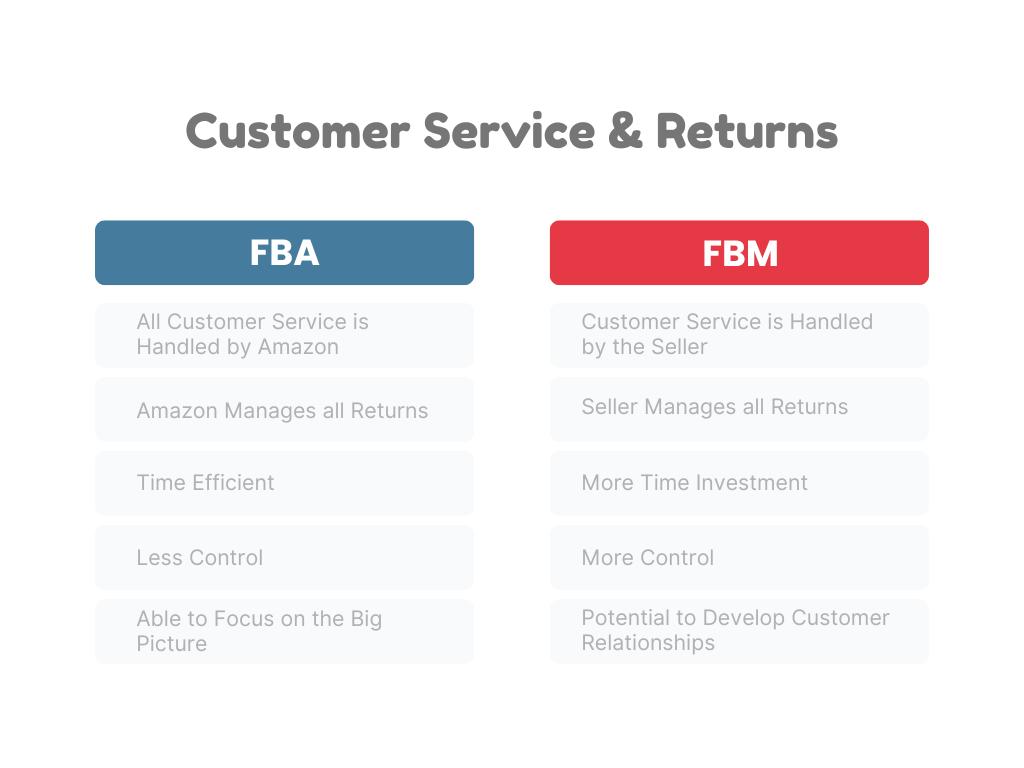
But you also give up control. If a customer abuses the return policy or sends back a clearly used item, Amazon will still process the refund, and there’s not much you can do about it.
FBM puts everything in your hands. That means every email, refund, and issue comes to you. It takes more time, no question. But it also lets you protect your margins, handle returns case by case, and build stronger relationships with buyers. I’ve seen FBM sellers turn a bad experience into a 5-star review just by being responsive and fair.
Just keep in mind, if something goes wrong under FBM, any negative feedback sticks. There’s no safety net.
6. Cash Flow
Cash flow is where FBM has a real advantage. You can source a product in the morning, list it by lunch, and sell it by dinner. That kind of same-day turnaround is amazing for testing products or jumping on seasonal trends, especially during Q4, when timing is everything.
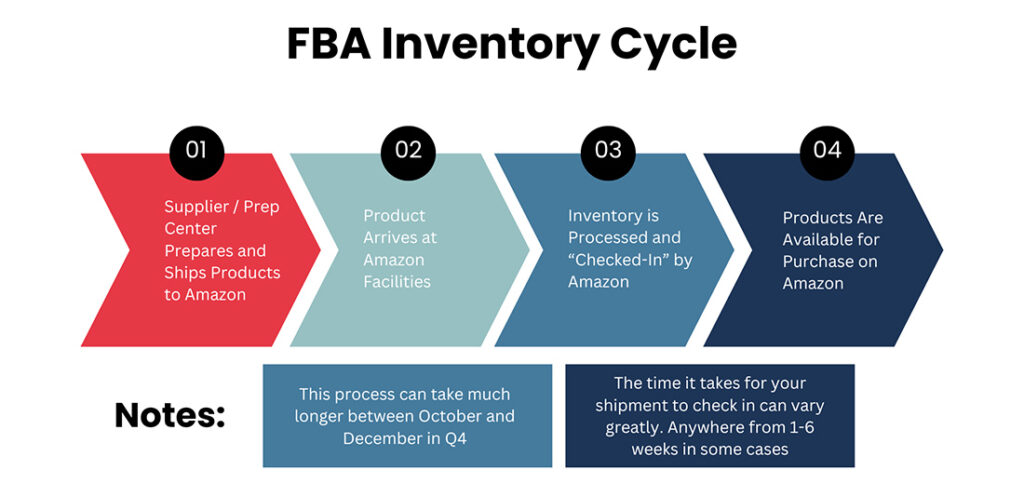
FBA, on the other hand, is a longer process. You usually need to buy in bulk, prep everything up front, and ship it to Amazon. From there, it can take anywhere from a few days to several weeks for inventory to check in and go live, especially during peak season between October and January. You’re tying up more cash and waiting longer to see returns, which makes inventory forecasting critical.
The tradeoff is that even though FBM gets cash moving faster, FBA still tends to drive more volume. In my experience, switching from FBA to FBM on the wrong product can drop your sales by 25% or more, especially if you lose the Prime badge.
Hybrid Strategy: When to Use Both FBA and FBM
A lot of new sellers treat FBA and FBM like it’s an either-or decision. It’s not. In fact, 21% of Amazon sellers in 2025 run both, and in my opinion, that number should be higher.
There’s a simple reason: each model covers the weaknesses of the other. FBA gives you the Prime badge, higher conversion rates, and access to Amazon’s world-class fulfillment network. FBM gives you speed, control, and flexibility, especially when things don’t go as planned.
Personally, I use both fulfillment options with both of my Amazon brands. A hybrid setup gives you options when Amazon limits inventory, when you need to test a new product fast, or when the numbers say self-fulfilling is just more profitable. You don’t have to choose between automation and control. You can, and should, build a system that does both.
Why I Always Turn On FBM During Q4 (and You Probably Should Too)
Q4 is where FBM really shines. If you’ve sold through a peak season before, you know how chaotic it gets. Amazon slows down, warehouses back up, and check-in times drag from days into weeks. If your FBA shipment isn’t shipped to Amazon by early October, there’s a real chance it won’t go live in time for peak season. And when you’re out of stock, you’re not making sales.
FBM allows you to fill that gap. When my FBA inventory runs low or gets delayed, I flip on FBM and keep selling. I’ve seen sellers clear six figures over a weekend just because they were able to stay live while FBA competitors stocked out. I know of one brand specifically that pulled in $3 million in FBM sales during Prime Big Deals Day and the Q4 rush, sales they would’ve lost if they’d waited on FBA.
It’s also the fastest way to move seasonal inventory. Whether it’s holiday bundles, Christmas décor, or last-minute gifts, FBM lets you get products live the same day they arrive. That’s huge when demand peaks and check-in times are delayed.
If you’ve never run FBM before, Q4 is a great time to start. Yes, it’s more work. But the flexibility it offers and the ability to keep selling when many FBA sellers stock out lead to a lot more sales during the busiest time of the year.
Which Fulfillment Method Fits Your Business?
Choosing Amazon FBA vs FBM ultimately comes down to your individual business needs. Do you have a limited starting budget? What kinds of products do you plan to sell? Are you more concerned with time efficiency or developing a personal relationship with your customers? All of these questions will help you determine which fulfillment model works best for you.
If you’re a new Amazon seller with limited funds, FBM can be a solid starting point. You avoid upfront storage and fulfillment fees, and it’s faster to get listings live, especially useful if you’re testing new products.
The tradeoff is time. Every shipment, return, and customer message lands on your plate.
FBA, by contrast, takes those tasks off your hands. If you have a bit more working capital, FBA can free up hours every week. That time adds up fast when you’re trying to find new products to sell, optimize listings, or optimize your ad campaigns.
It also makes scaling smoother. With FBM, more orders mean more manual work. With FBA, Amazon handles all of that, so you can grow without burning out or hiring a team.

Why FBA Is the Best Starting Point for Most New Sellers
For most new Amazon sellers, I recommend starting with FBA as your fulfillment method. I say that from experience, because in the beginning, there’s enough to figure out already. Depending on your business model, you may need to learn about keywords, listing optimization, PPC, product research, accounting, and more. The last thing you need is to take on the responsibility of packing and shipping every order as well.
With FBA, Amazon handles all of the grunt work, shipping, customer service, and returns. That means you can spend your time on everything else. You also get an instant edge with Prime shipping and the Prime badge. This means higher conversion rates and easier Buy Box wins.
FBA also protects you from rookie mistakes. If something goes wrong in transit, Amazon takes the blame, not you. And because they manage fulfillment, you’re not tied to your garage or a local warehouse. You can literally run the business from your laptop.
If I had to start over today, I’d still choose FBA first. It’s the most beginner-friendly way to learn how Amazon works and scale quickly once you get the hang of it.
Frequently Asked Questions (FAQ’s)
What is the cost difference between FBA and FBM?
FBA has higher fees, but offers Prime 1-2 day shipping. FBM has lower Amazon fees, but you’ll cover your own shipping and handling costs.
For light, fast-moving items, FBA is often the cheaper option. For bulky or slower products, FBM can be more profitable if your logistics are tight.
Can I sell both FBA and FBM?
Yes, you can use both FBA and FBM at the same time. In fact, many sellers (including me) use both fulfillment methods in their business. You can use FBA for the bulk of your sales, but then add in FBM for Q4 when check-in times get longer and you need the extra flexibility that FBM offers.
Does using FBA or FBM impact Buy Box eligibility?
Yes, FBA significantly improves your chances of winning the Buy Box. Amazon prioritizes FBA sellers for the Buy Box due to Prime shipping and Amazon’s trust in its own logistics.
FBM sellers can compete, but often need lower prices to win. If you’re chasing the Buy Box, FBA gives you the best odds.
How do I convert a listing to FBA?
In Seller Central, visit the “Manage Inventory” page and find the product you want to change. From the dropdown list on the right side of the screen, click on “Change to Fulfilled by Amazon.”Once your inventory is checked in by Amazon, your listing will switch to FBA.
Who pays for shipping with FBM?
With FBM, the seller pays for all shipping costs. This includes buying labels, choosing carriers, and covering the full cost of delivery to the customer.
You can use Amazon Buy Shipping or tools like Pirate Ship to access discounted rates, but the expense still comes out of your margin. If you’re using FBM, I recommend baking this into their pricing.
Deciding Between FBA vs FBM for Your Amazon Business
Choosing between FBA and FBM comes down to what works best for your products, your cash flow, and how hands-on you want to be. I’ve seen both models succeed, and I’ve also seen sellers get frustrated by choosing the wrong one.
If you’re just starting out, FBA is usually the smoother path. It gets your products in front of more customers and gives you more time to focus on learning the fundamentals of e-commerce. But if you’re managing oversized items or selling seasonal inventory, having FBM in your back pocket is always a good idea.
Run the numbers. Test both methods. Keep your options open. Remember, it’s not one or the other; sometimes the best answer can be a mix of both.
Recommended Articles
- How to Start an Amazon FBA Business: A 7-Step Guide
- How to Start an Amazon Online Arbitrage Business in 2025
- Amazon Fulfilled by Merchant (FBM): A 2025 Guide for E-Commerce Sellers
Levi Adler is an experienced Amazon seller, e-commerce specialist, and the founder of Levi’s Toolbox. With over a decade in the trenches selling on Amazon and managing his own Shopify stores, Levi writes from his own experience. Sharing what worked, what flopped, and the strategies he wishes he’d known sooner. When he’s optimizing listings or managing ad campaigns, you’ll find Levi hitting mountain bike trails or hanging out with his two huskies, Emma and Scout.
